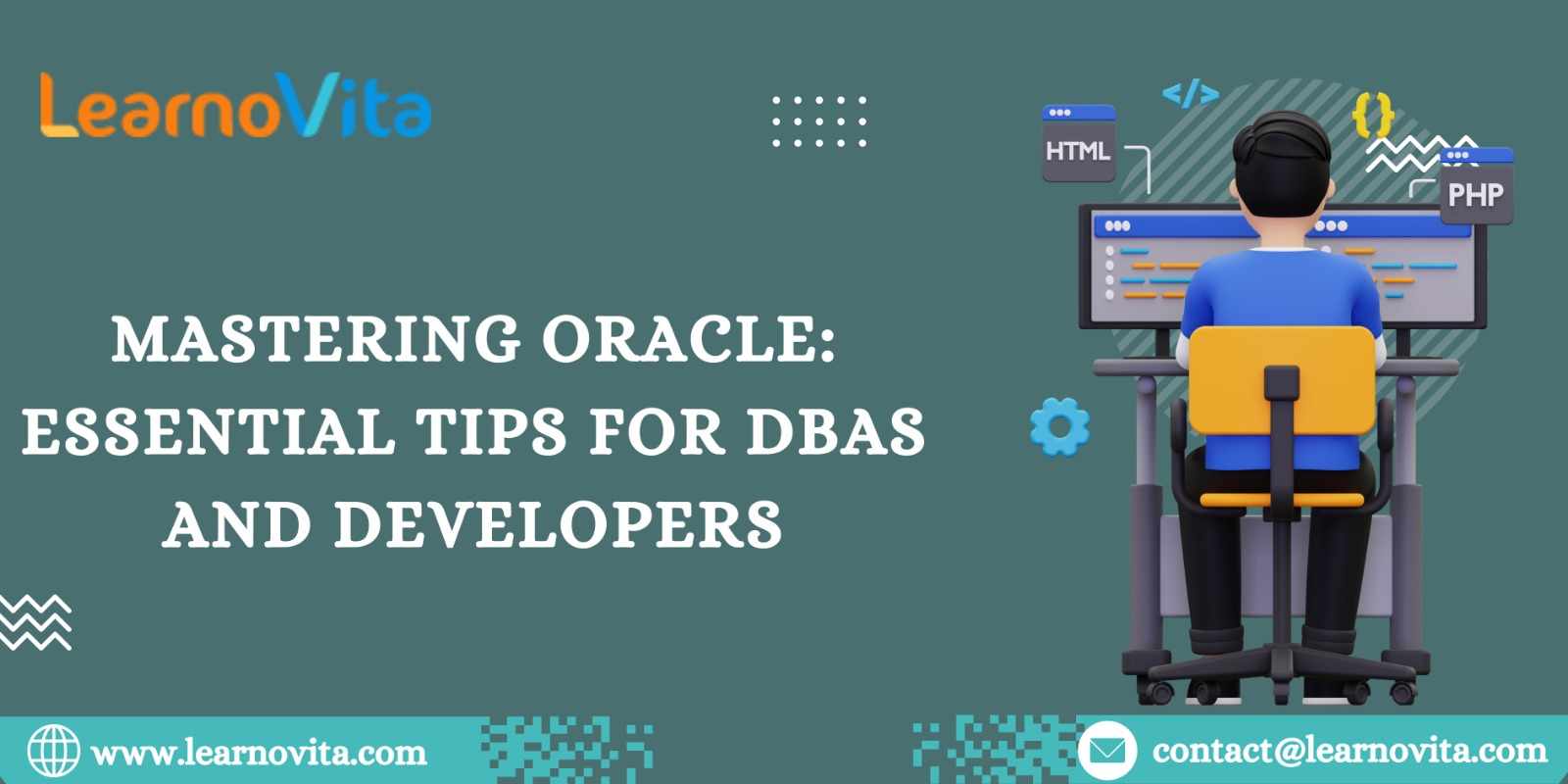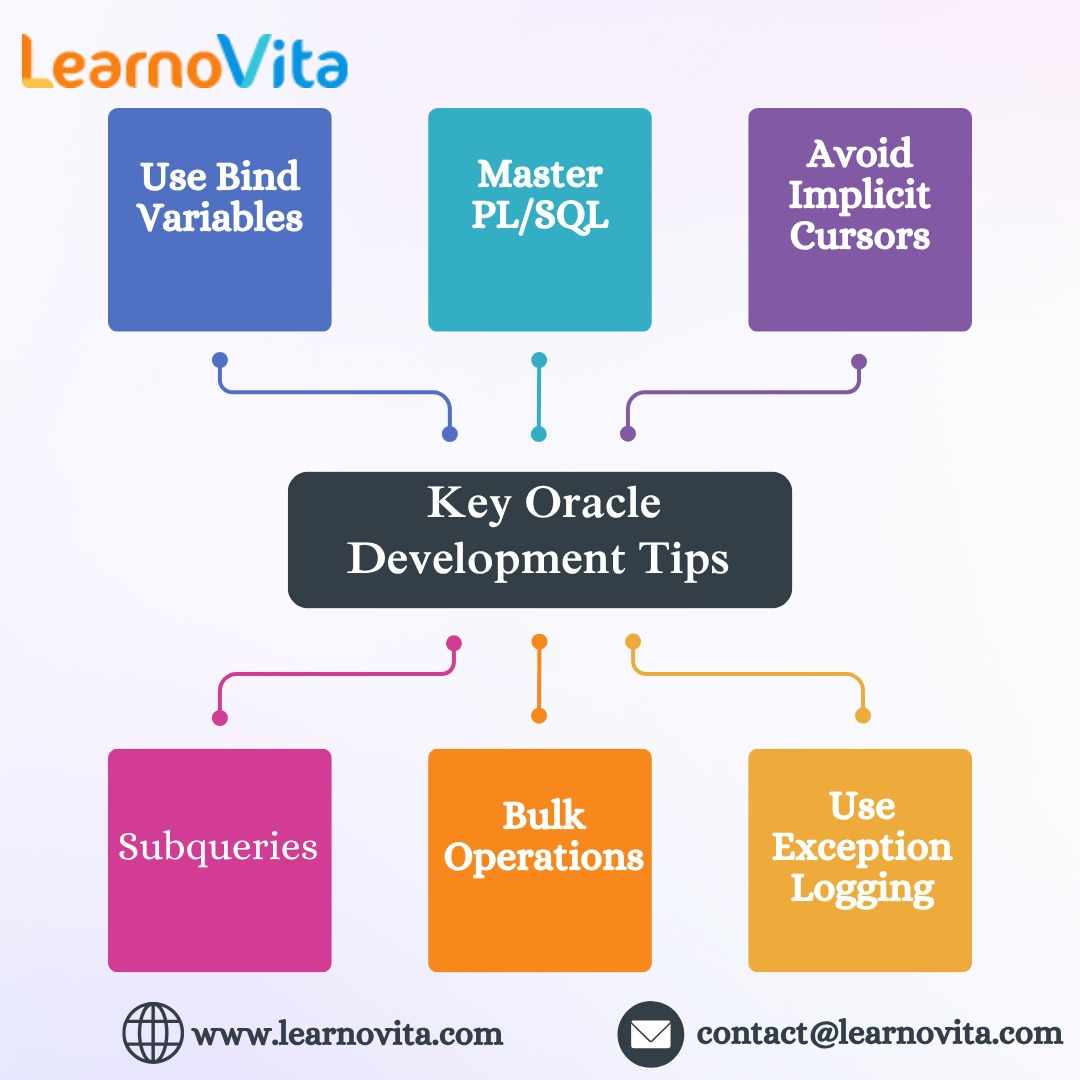Oracle Database remains a core technology in enterprise IT infrastructure, powering mission-critical systems across finance, healthcare, manufacturing, and more. Its robust performance, unmatched scalability, and deep security features make it the preferred choice for managing large volumes of structured data. But navigating Oracle effectively whether as a developer or a database administrator (DBA) requires more than surface-level knowledge. It demands a practical understanding of Oracle’s engine, architecture, and smart workflows. This article shares actionable insights for both DBAs and developers who aim to maximize Oracle’s full potential in real-world projects.
Understanding Oracle’s Core Components
To work confidently within Oracle environments, it's essential to comprehend how the platform functions at its core. Oracle's architecture is based on a client-server model, consisting of two primary parts: the instance and the database. The instance includes the System Global Area (SGA) , a shared memory structure and critical background processes like DBWR (which writes modified blocks to disk), LGWR (which logs transactions), and SMON (responsible for system recovery). The database component comprises the physical files that store data datafiles, control files, and redo logs. The Oracle Certification Course provides essential skills and knowledge to master Oracle databases and advance your career in administration and development.

Oracle Development Tips for Peak Efficiency
Developers working with Oracle must focus on writing optimized, scalable, and maintainable code. Here are some key practices they should follow:
Leverage Bind Variables: Instead of hardcoding values in SQL statements, use bind variables to reduce hard parsing and enable SQL reuse.
Master PL/SQL: Take full advantage of Oracle’s procedural language to build reusable logic blocks, handle exceptions, and manage transactions cleanly.
Use Explicit Cursors When Needed: For complex logic, explicit cursors provide greater control over result sets and memory handling.
Write Lean SQL Queries: Design efficient SQL by minimizing nested subqueries, selecting only necessary columns, and avoiding costly full table scans.
Employ Bulk Processing: Use PL/SQL features like BULK COLLECT and FORALL to process large volumes of data efficiently and reduce context switches.
Centralize Error Logging: Create a reusable, structured error-logging mechanism to aid in debugging and streamline application maintenance.
When developers adopt these practices, they build robust applications that interact smoothly with the Oracle backend and scale effortlessly under load.
Structuring Data Smartly: Indexes and Partitions
As databases grow in volume and complexity, performance tuning becomes essential. One of the most powerful tools in Oracle’s arsenal is indexing. But effective indexing is an art while the right index can drastically cut query response time, unnecessary or excessive indexes can harm write operations and increase overhead. Oracle supports several types of indexes B-tree for high-cardinality searches, bitmap for analytic queries with low-cardinality fields, and function-based indexes for advanced filtering. Developers and DBAs must work closely to assess query patterns and apply indexes based on usage metrics from tools like EXPLAIN PLAN or AWR reports. Partitioning large tables is another best practice. By dividing data logically whether by range, list, or hash Oracle can isolate and process only the necessary portions during queries.
Oracle DBA Fundamentals: Reliable Daily Practices
DBAs are at the heart of keeping Oracle environments secure, fast, and available. Here are essential practices every Oracle DBA should incorporate:
Manage Privileges with Roles: Assign permissions via roles rather than individually to simplify security and improve scalability.
Schedule RMAN Backups: Automate and validate regular backups using Oracle’s Recovery Manager (RMAN) to ensure disaster recovery readiness.
Use Data Pump for High-Speed Transfers: expdp and impdp allow rapid data exports and imports, far outperforming legacy tools.
Automate Jobs with Oracle Scheduler: Internal scheduling is more integrated and trackable than external OS-level schedulers like cron.
Enable Fine-Grained Auditing: Monitor activity down to the object level to ensure compliance and detect unauthorized changes.
Review Performance with AWR & ADDM: Use built-in diagnostics to detect trends, isolate slow SQL, and plan improvements.
Keep Statistics Up-to-Date: Refresh optimizer statistics regularly to ensure efficient query execution.
Adopting these methods ensures that the Oracle environment runs smoothly and remains easy to manage as demands scale. Our Best Training & Placement Program ensures hands-on learning and career support, guiding you from skill-building to securing your dream job.

Securing the Oracle Ecosystem
Security should never be treated as an afterthought. Oracle provides a robust suite of features to secure data from external threats and internal misuse. DBAs should enforce strong authentication, lock down listener configurations, and implement Transparent Data Encryption (TDE) to secure data at rest. Fine-grained tools like Data Redaction and Virtual Private Database (VPD) add additional layers of control over who sees what. Developers also have a responsibility to write secure code. SQL injection, improper input handling, and exposing sensitive logic can all compromise the database. By validating input and following secure development practices, they support a more resilient Oracle environment. Together, developers and DBAs build layered security from infrastructure to application.
Performance Tuning: From Reactive to Proactive
Rather than waiting for problems to appear, proactive monitoring keeps Oracle systems optimized around the clock. Developers should continuously assess query plans using tools like EXPLAIN PLAN, while DBAs rely on AWR, ADDM, and ASH to monitor performance trends and workload distributions. Oracle’s SQL Tuning Advisor and Access Advisor help identify inefficient SQL, recommend indexes, and optimize resource usage. Regular tuning of memory pools, CPU configurations, and I/O settings ensures that both OLTP and OLAP workloads are handled efficiently. With this continuous feedback loop, the system performs well even under high concurrency and peak traffic.
Final Thoughts
Mastering Oracle isn't just about memorizing commands, it's about applying smart strategies, understanding how the system behaves, and working cohesively across roles. Developers craft the logic, DBAs maintain the structure, and together, they ensure data remains accurate, accessible, and secure. By following the tips shared above, you can not only enhance your Oracle expertise but also contribute to high-performing, future-ready systems that drive real business impact.


Write a comment ...